From the Bard Observer (September 9, 1964). I ran the Friday night film series during most of my time at Bard College, and in many cases, I was booking these films in order to see them for the first time (although, as I recall, not in the cases of North by Northwest, Zazie, Jules and Jim, This Sporting Life, Freaks, or The Phenix City Story). –- J.R.
Sept. 12 KEY LARGO (See page 4 for a review.) [Note: this was a reprint of James Agee’s original review of this film in The Nation.]
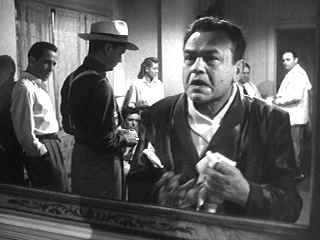
Sept. 18 TROUBLE IN PARADISE. Continental comedy borne up out of the early thirties, directed by Ernst Lubitsch.

THE PASSION OFJOAN OF ARC. Mlle. Falconetti suffers in public and in silence. Directed by Carl Dreyer in 1928.
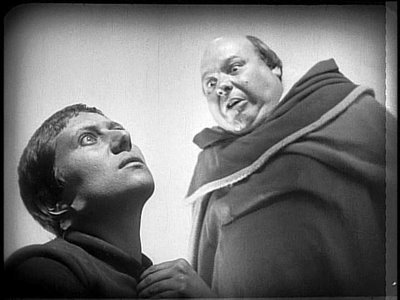
_________________________________________________________________________________________________ Sept. 25SAWDUST ANDTINSEL Also known as “The Naked Night”. The only Ingmar Bergman film Bard can afford (also one of the best). A circus setting; made in 1953.
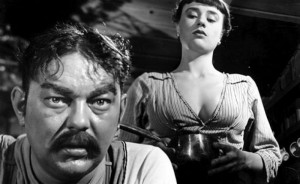
Also: “Jammin’ the Blues,” 10 minutes of Lester Young, Harry Edison, Jo Jones and others.
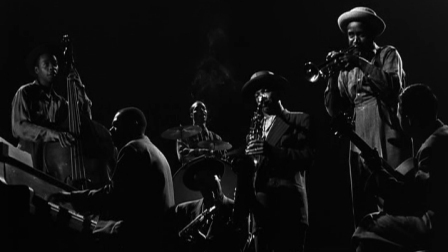
Oct. 2 FREAKS/THE PHENIX CITY STORY A double feature devoted to le film maudit: 2unconventional American “B” pictures—the first an unclassifiable and unsettling 60-minute story of sideshow life, the second a sensational “exposé” of corrupt Alabama politics, filmed on location. Read more
From the Chicago Reader (June 1, 2002). — J.R.

The first feature Alexander Dovzhenko made outside his native Ukraine (1935, 93 min.) takes place in a vast Siberian forest on the Pacific coast populated by religious villagers, hunters and adventurers, and Japanese spies, where the Soviets planned to establish an airfield and a city. Frankly operatic in its portraiture and poetic sylization, this Soviet masterpiece began as propaganda but veers closer to pagan fantasy than any of Dovzhenko’s other sound films, and it quickly became a favorite of both Elia Kazan and James Agee when it opened in the U.S. under the title Frontier. As always in Dovzhenko, the depictions of death are especially memorable. In Russian with subtitles. (JR)
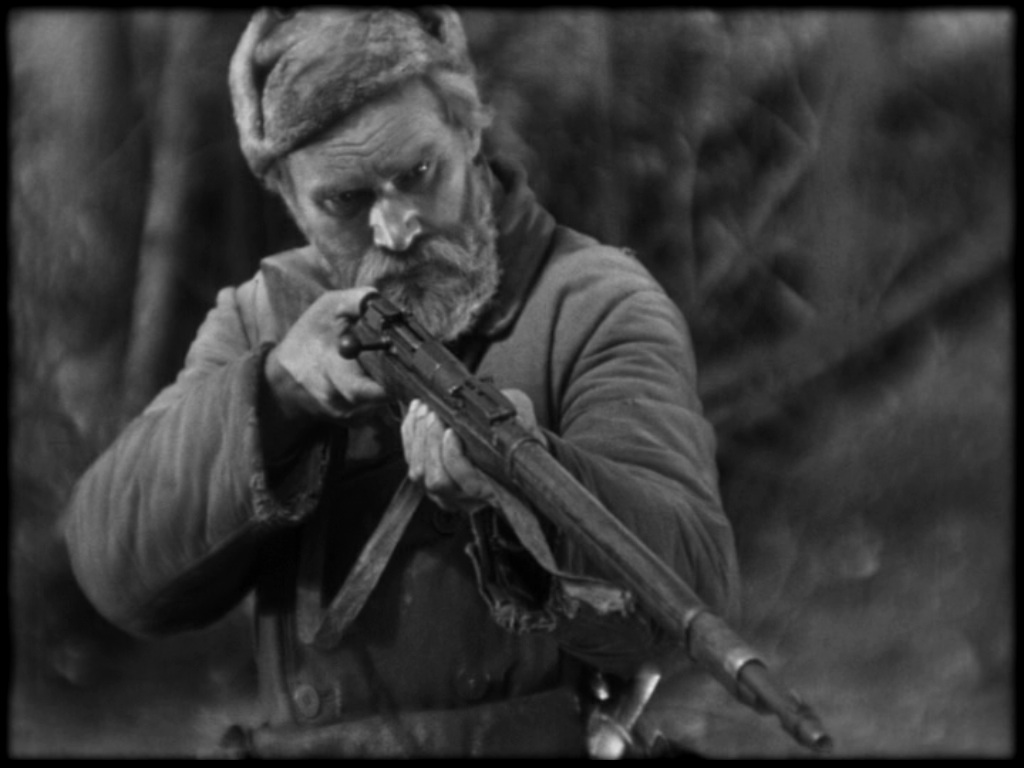 Read more
Read more
The second part of my reprinting of Moving Places: A Life at the Movies (1980); this part appeared originally in Film Comment, and for this appearance I’ve added several illustrations.
Note: The book can be purchased on Amazon here, and accessed online in its entirety here. — J.R.
Prelude—
What I Did on My Summer Vacation (September 1977)
Imagination believes before knowing constructs. Believes longer than remembers, longer than knowing even conjures. Knows believes conjures a highway in Mississippi, August 10, on the way to Faulkner’s home in Oxford, tracing a literary pilgrimage from Florence, my hometown in Alabama, part of whose route might approximate the pregnant journey of Lena Grove on the opening pages of Light in August.
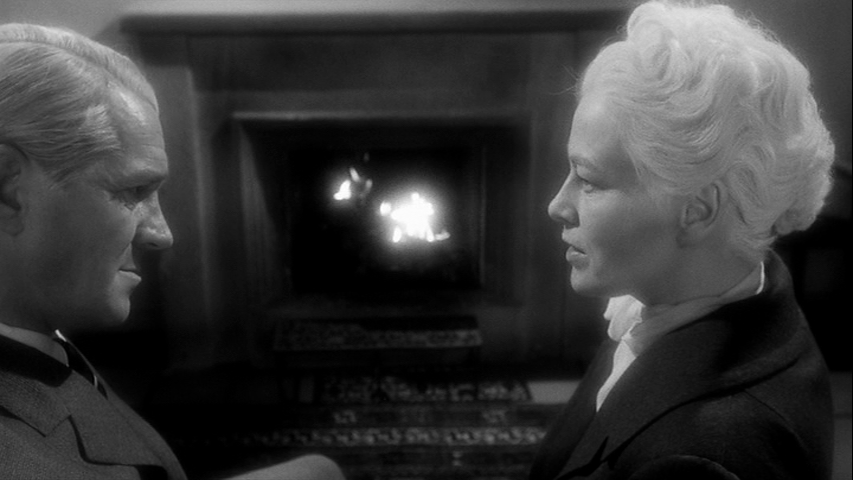
What has any of this to do with cinema? First, the car’s languid progress up and down a straight road flanked by forest: a trick of suspended time, pure movie and pure Faulkner. Then the hot moist afternoon light filtering through the branches into a milky pool of delicate focus, like the last scene in Carl Dreyer’s Gertrud, making it easy to imagine in a tactile, even in a carnal way why Dreyer wanted to adapt Light in August, thinking Yes of course only Dreyer could have done it right, handled both sides of the dialectic, all the hot wood and cold flesh and embracing palpitant air, impregnable and inviolate. Read more
R.I.P. Jonas Mekas, Patron-Saint of Cinema, 1922-2019. — J.R.
(from http://www.incite-online.net/jonasmekas.html)
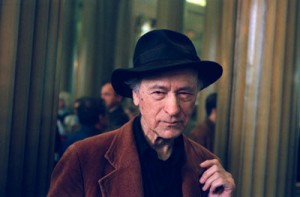
Anti-100 Years of Cinema Manifesto
By Jonas Mekas
As you well know it was God who created this Earth and everything on it. And he thought it was all great. All painters and poets and musicians sang and celebrated the creation and that was all OK. But not for real. Something was missing. So about 100 years ago God decided to create the motion picture camera. And he did so. And then he created a filmmaker and said, “Now here is an instrument called the motion picture camera. Go and film and celebrate the beauty of the creation and the dreams of human spirit, and have fun with it.”
But the devil did not like that. So he placed a money bag in front of the camera and said to the filmmakers, ‘Why do you want to celebrate the beauty of the world and the spirit of it if you can make money with this instrument?” And, believe it or not, all the filmmakers ran after the money bag. The Lord realized he had made a mistake. So, some 25 years later, to correct his mistake, God created independent avant-garde filmmakers and said, “Here is the camera. Read more
From the Chicago Reader (July 9, 2004). — J.R.

Springtime in a Small Town
*** (A must-see)
Directed by Tian Zhuangzhuang
Written by Ah Cheng
With Hu Jingfan, Wu Jun, Xin Baiqing, Ye Xiaokeng, and Lu Sisi.
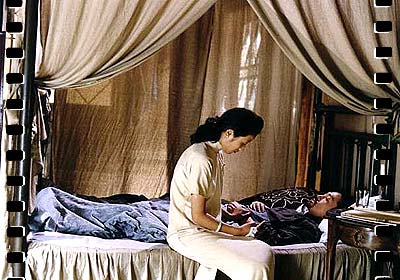
It’s strange and very telling that the film most highly regarded in the Chinese-speaking world –especially in Hong Kong and Taiwan — is hardly known outside China. Fei Mu’s 1948 Spring in a Small City, as it’s usually called in English, is a film I doubt I ever would have seen if a Chinese friend hadn’t sent me a subtitled copy taken from a rare showing on SBS, Australia’s state-funded multicultural TV channel, several years ago.
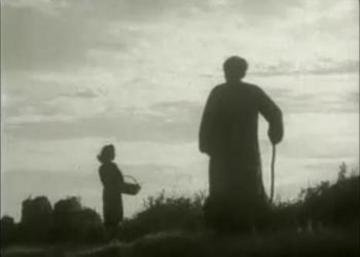

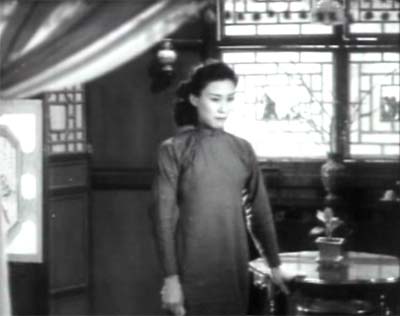

Once I discovered that Fei Mu’s black-and-white film lives up to its reputation, I mentioned it casually to a local Chinese film buff, who told me it was readily available at the video store he frequents in Chinatown. Why then are English subtitled versions so scarce? After all, the film was a key inspiration for Wong Kar-wai’s In the Mood for Love (2000), which has been savored by non-Asians across the globe. And Tian Zhuangzhuang’s color remake of Fei Mu’s classic, Springtime in a Small Town (2002), showing this week at the Gene Siskel Film Center, is no less accessible. Read more
In late 2002 or early 2003, I was approached by an editor at Oxford University Press about the possibility of editing a new Oxford Companion to Film. Despite some initial reluctance on my part—being rather frightened of the dimensions and demands of such a project—the editor was persistent, and eventually I signed a contract to carry out this work, after drawing up a proposal, enlisting the late Robert Tashman, a Chicago friend (and former Granta editor) to serve as line editor, and compiling several lists of entries (1099 of them covering A through L, as far as I ever got) and contributors (an ideal list of 43). But the project fell aground after the editor who had enlisted me got downsized. A meeting of Tashman and myself with other Oxford editors in New York made it clear that they weren’t interested in following through on the project, and frankly, I wound up feeling relief about this (although I’m sorry to say that Bob was disappointed—even though both of us were able to keep our advances).
What follows are two sample entries that I wrote for this abortive project; if memory serves, both benefited from Bob’s line-editing. I haven’t updated either of them. Read more
From the Chicago Reader (June 1, 2002). — J.R.
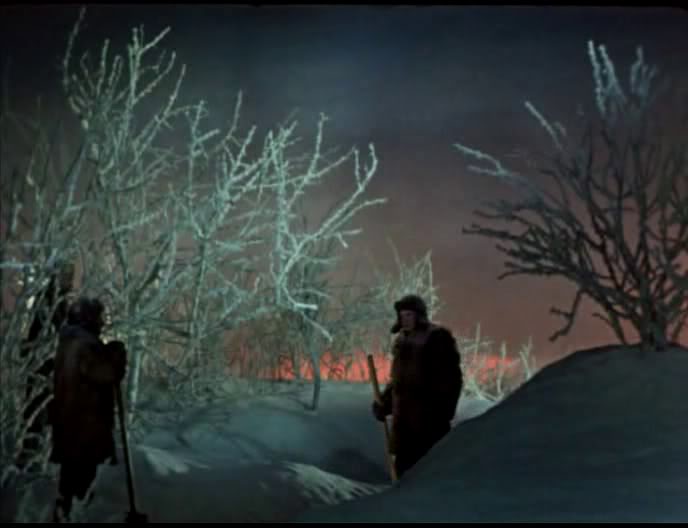
Alexander Dovzhenko’s first color film and last completed feature (1948, 103 min.) was based on his play Life in Bloom, a biography (verging on hagiography) of the celebrated Russian botanist Ivan Michurin. Both the play and its screen adaptation attracted the interest of Joseph Stalin, who dictated various revisions; in fact Dovzhenko may have removed his name from the film in protest, as the credits list his wife, Julia Solntseva, as director and identify him only as the producer and screenwriter. Certain characteristic touches show up here and there — some signature landscapes, a powerful passage evoking John Ford that shows Michurin’s grief over his wife’s death — but generally this is a feel-good Stalinist biopic. Perhaps the most interesting propaganda comes in the opening scene, when a wealthy American (speaking in English) attempts to lure Michurin to the States with untold riches. In Russian with subtitles. (JR)

 Read more
Read more
From the Chicago Reader (February 1, 1988). — J.R.
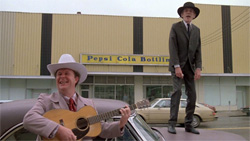

Along with The Man Who Would Be King and The Dead, this is arguably John Huston’s best literary adaptation, and conceivably his very best film — a very close rendering of Flannery O’Connor’s remarkable first novel about a crazed southern cracker (a perfectly cast Brad Dourif) who sets out to preach a church without Christ, and winds up suffering a true Christian martyrdom in spite of himself. The period, local ambience, and O’Connor’s deadly gallows humor are all perfectly caught, and apart from the subtle if highly pertinent fact that this is an unbeliever’s version of a believer’s novel, it’s about as faithful a version of O’Connor’s grotesque world as one could ever hope to get on film, hilarious and frightening in equal measure. O’Connor conceived her novel as a parody of existentialism, and Huston’s own links with existentialism — as the director of the first U.S. stage production of No Exit, as well as Sartre’s Freud script — make him an able interpreter. With Harry Dean Stanton, Amy Wright, Daniel Shor, Ned Beatty, and Huston himself as the hero’s fire-and-brimstone grandfather. The producer is Michael Fitzgerald, whose family’s friendship with O’Connor guaranteed the fidelity and seriousness of the undertaking (1979). Read more
Posted on Artforum’s web site, 12/23/09. –- J.R.
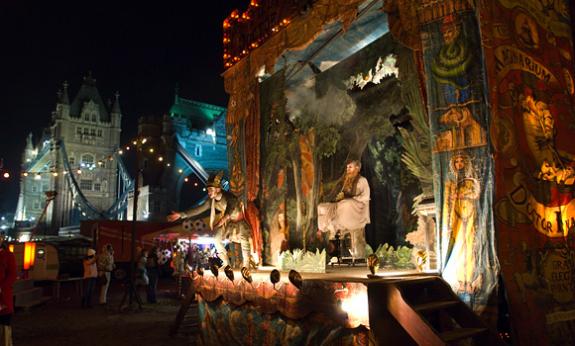
Terry Gilliam’s ambitious fantasy, The Imaginarium of Doctor Parnassus, set to open in the US on Christmas Day, already did well in some parts of Europe when it premiered there in October—notably Italy and the UK, where it placed third during its opening weekends in both countries. I saw it the first time myself in Saint Andrews, Scotland, with an appreciative audience in early November. The lead character, Tony — played by the late Heath Ledger and three other actors (Johnny Depp, Jude Law, and Colin Farrell), who were called in when Ledger died halfway through the filming — is partly conceived as a spoof on Tony Blair, though one wonders whether this conceit will register with much clarity for the American audience. But it’s also unclear how much this will matter, given all the other points of attraction (such as Tom Waits as the devil and Christopher Plummer as the Methuselah-like Parnassus). Far more relevant, it seems, is the way Gilliam has ingeniously adapted the avant-garde multiple-casting ploy of everyone from Yvonne Rainer (Kristina Talking Pictures [1976]) to Todd Haynes [2007]) in terms of his own mainstream fantasy plot. Read more
From the Chicago Reader (June 1, 1988). . — J.R.

Whether you like this or not — and it’s quite possible that you won’t — this has got to be one of the weirdest and most original movies around. Written and directed by former film critic and scriptwriter-turned-director Paul Mayersberg (The Man Who Fell to Earth), whose previous solo feature never hit these shores, this is produced by Julie Corman, wife of Roger, and harks back to a lot of 60s Corman productions in various ways, for better and for worse; it also may be the first U.S. exploitation film to show the influence of Raul Ruiz in its striking use of colors and color filters, and Jasper Johns springs to mind in relation to some of the set painting. Mayersberg’s starting point and putative focus is Isaac Asimov’s famous SF story, set on the planet Lagash, where it is always daylight, shortly before its civilization collapses; David Birney, Sarah Douglas, Andra Mylian, and Alexis Kanner head the cast, and much of the action and decor reflect a series of interesting solutions for representing an alien culture as cheaply as possible. If you’re looking for something different, make sure to catch this oddity. Read more
From Time Out (London), June 4-10, 1976. I’ve always had very mixed feelings about this commissioned cover-story piece, especially about its stupid and offensive title (not mine) as well as what I now regard as a certain conformist pandering to what I regarded as mainstream taste. As I recall, the whole piece was written very quickly, following the capricious whim of the magazine’s editor. I especially regret the way I fell into some of the mindless consensus of condemning The Day the Clown Cried without having seen any part of it, which by now has become a standard reflex in Anglo-American Lewis-bashing. I’ve corrected a couple of factual errors. -– J.R.

Who is Jerry Lewis?

A comedian who has acted in over three dozen films, eight of which he’s directed, himself.I became a fan back in 1949, when he first appeared as secondary comic relief in ‘My Friend Irma’, and followed him religiously through his countless vehicles with Dean Martin in the 50s. As I grew older, critics began to warn me that he was childish and self-indulgent, friends groaned whenever his name cropped up, and I discovered that he usually came across as a sanctimonious prig whenever he made personal appearances on TV. Read more
These are the original letters published in French translation in Trafic no. 24, Winter 1997 and subsequently published in English in a 2003 book edited by Adrian Martin and myself, Movie Mutations: The Changing Face of World Cinephilia (London: British Film Institute). These letters have by now also appeared in Croatian, Dutch, Farsi, French, German, and Spanish. — J.R.
From Jonathan Rosenbaum (Chicago):
7 April, 1997
Dear Adrian,
Almost a year has passed since I wrote in Trafic* about “the taste of a particular generation of cinephiles — an international and mainly unconscious cabal (or, more precisely, confluence) of critics, teachers, and programmers, all of whom were born around 1960, have a particular passion for research (bibliographic as well as cinematic), and (here is what may be most distinctive about them) a fascination with the physicality of actors tied to a special interest in the films of John Cassavetes and Philippe Garrel (as well as Jacques Rivette and Maurice Pialat).” I named four members of this generation — Nicole Brenez (France), Alexander Horwath (Austria), Kent Jones (U.S.), and you (Australia). Each of you, I should add, I met independently of the other three, originally through correspondence (apart from Kent), although Kent and Alex already knew each other. Read more
From the Chicago Reader (September 1, 1988). — J.R.
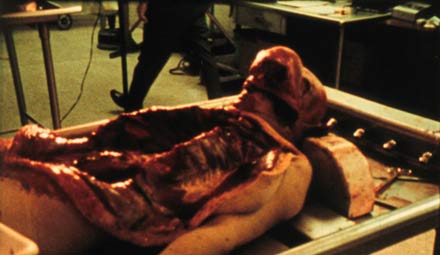
Stan Brakhage’s convulsive personal and silent documentary about a Pittsburgh morgue, made in 1971, is one of the most direct confrontations with death ever recorded on film. Included on the same program — along with a lecture by Chuck Kleinhans, professor of film at Northwestern University — are three other shorts that are not conventionally regarded as horror films, but that will be considered in relation to that genre: Maya Deren and Alexander Hammid’s ground-breaking experimental film Meshes of the Afternoon (1943); Chris Marker’s innovative science fiction film La jetee (1964), which tells its story almost exclusively in stills; and Celia Condi’s 1982 combination of soap-opera characters and dark humor, Beneath the Skin. (JR)
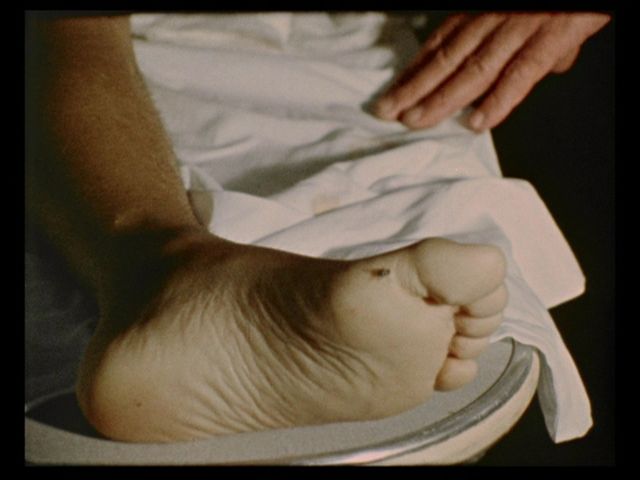 Read more
Read more
From the Chicago Reader (April 8, 1988). — J.R.
Alain Resnais’ masterpiece, easily his best film in years, is bound to baffle spectators who insist on regarding him as an intellectual rather than an emotional director, simply because he shares the conviction of Carl Dreyer and Robert Bresson that form is the surest route to feelings. In his 11th feature, he adapts a 1929 boulevard melodrama by a forgotten playwright named Henry Bernstein, and holds so close to this “dated” and seemingly unremarkable play that theatrical space and décor — including the absence of a fourth wall — are rigorously respected, and shots of a painted curtain appear between the acts. None of this is done to strike an attitude or “make a statement”: Resnais believes in the material, and wants to give it its due. Yet in the process of doing this, he not only invests the original meaning of “melodrama” (drama with music) with so much beauty and power that he reinvents the genre, but also proves that he is conceivably the greatest living director of actors in the French cinema, and offers a way of regarding the past that implicitly indicts our own era for myopia. (Mélo is certainly a film of the 80s and not an antique, but it may take us another 20 years to understand precisely how and why.) Read more
This was written on February 25, 2007, provoked by yet another case of a Wellesian pseudo-expert bonding with another non-expert to lay down what is supposed to be the definitive history and wisdom on the subject. Sanford Schwartz did write me a short, polite, private response that, as nearly as I can recall, didn’t really engage with any of my arguments. — J.R.

To the Editors:
I’m grateful for Sanford Schwartz’s article about Orson Welles in the March 15 issue of the New York Review of Books, which strikes me as being far more sensitive to Welles’s work and some of the issues posed by his troublesome career than most pieces I’ve read on the subject by nonspecialists. Even if Schwartz’s ideas about Welles as a proto-surrealist are more provocative than convincing to me, they do lead to some arresting observations about his visual style. So I hope he’ll forgive me for pointing out an error in his piece and a few assertions that I believe are misleading. They all derive from confusions that invariably greet any effort made to describe Welles in relatively simple terms.

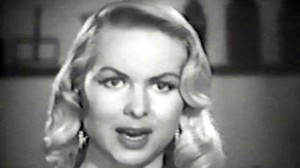
First, the error: “Although [Welles] was involved with many films that for one reason or another weren’t brought off, he actually finished only twelve, a group that includes the fairly short F for Fake and The Immortal Story, both made for TV.” Read more






























